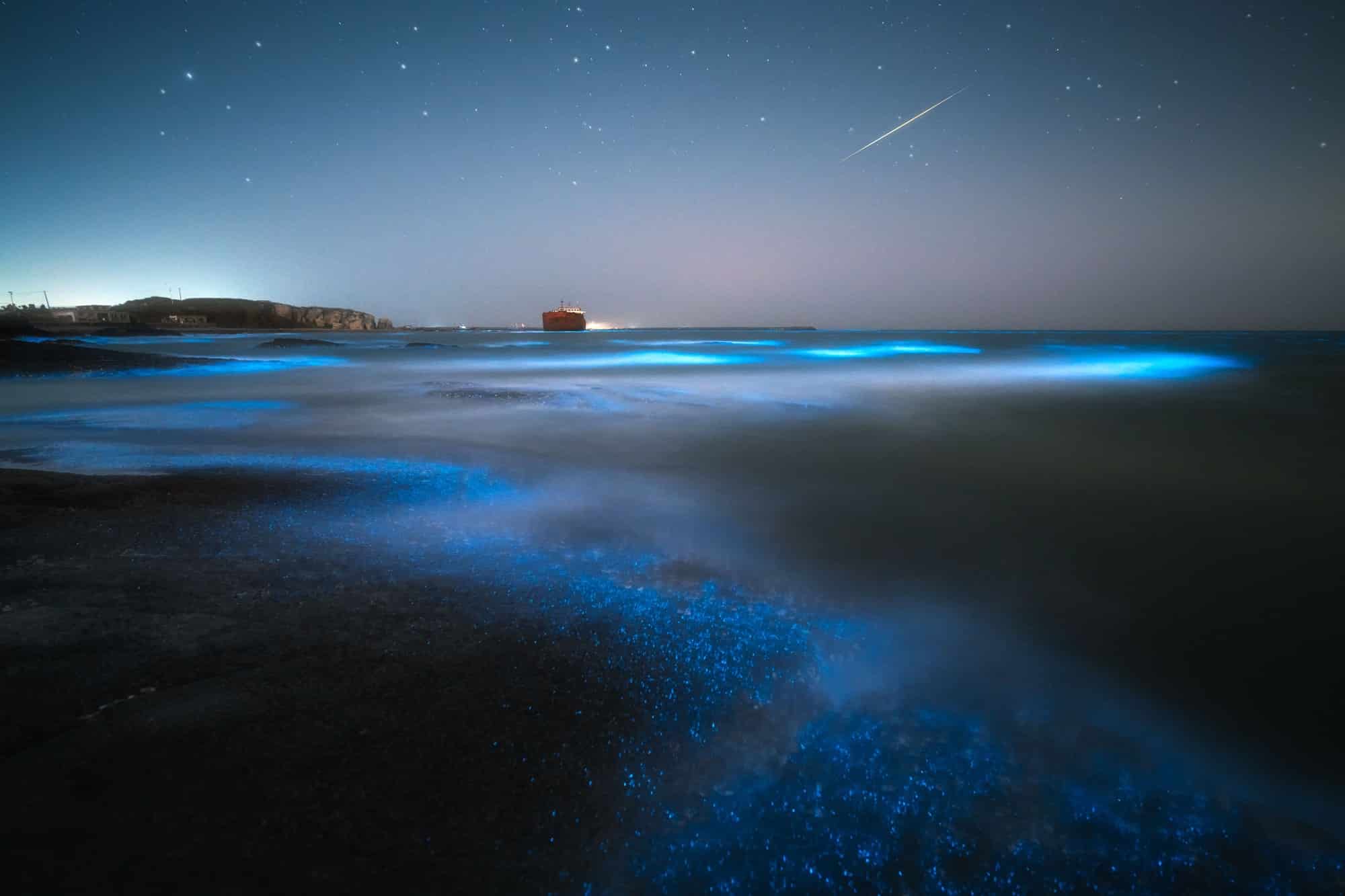What’s the Latest in Bioluminescent Lighting for Eco-Friendly Urban Design?

Imagine a city that glows in the dark and dazzles with its charm. This might sound like a fantasy, but it’s slowly becoming a reality. Bioluminescent lighting is the latest trend in sustainable urban design. The use of light-emitting organisms like plants and bacteria is revolutionizing the way we think about lighting and energy conservation.
The Science Behind Bioluminescence
Bioluminescence is the production and emission of light by a living organism. The glow is the result of a biochemical reaction in which energy is released in the form of light. Different organisms utilize this mechanism to communicate, attract mates, or deter predators.
A lire aussi : What’s the Latest in Anti-Drone Technology for UK Airports’ Security?
Microorganisms like bacteria and microalgae are known to exhibit this phenomenon. Certain types of plants and trees have also been genetically modified to carry this trait. The glowing effect is usually triggered by a specific enzyme known as luciferase. When this enzyme interacts with a molecule called luciferin, it emits light.
The potential of these natural light-emitting organisms is immense. They offer a sustainable source of light that could replace or reduce our dependence on electric lighting. The light produced is natural and doesn’t produce heat, making it highly efficient and energy-saving.
En parallèle : What Is the Role of Gamification in Enhancing UK Online Education?
Bioluminescent Plants and Trees: A Shining Revolution in Urban Design
The use of bioluminescent plants and trees in urban design is an intriguing concept. Imagine strolling in a park during the night and seeing the trees and plants glow with a soothing light. Or picture a city illuminated by glowing trees instead of streetlamps. Isn’t it mesmerizing?
This is no longer just a romantic idea. Several projects are currently exploring the feasibility and potential of using bioluminescent plants for lighting in urban spaces. One such project is the ‘Glowing Plant’ initiative, a crowdfunded project that aimed to create genetically modified plants that can glow in the dark.
Similarly, in 2020, MIT researchers announced that they had successfully created plants that glow, providing enough light to read a book at night. The team used luciferase, the enzyme responsible for bioluminescence in fireflies, to create the glow in the plants.
While the practical integration of glowing plants in urban design is still under research, the prospects are awe-inspiring. From glowing trees replacing street lamps to glowing plants acting as natural night lights, the possibilities seem endless.
Lighting Up Cities with Bioluminescent Bacteria and Algae
While glowing plants offer an appealing aesthetic solution for urban lighting, bioluminescent bacteria and algae could prove more practical and energy-efficient for large scale applications.
Bioluminescent bacteria, like Vibrio fischeri, produce a bright, blue-green light. When cultured correctly, these bacteria can provide continuous light for extended periods. Similarly, certain species of algae, like Pyrocystis fusiformis, give off a blue-green light when disturbed. This bioluminescent feature can be manipulated and utilized in lighting designs.
Projects such as ‘Glowee’ have already started to harness the power of bioluminescent bacteria. Glowee is a French startup that develops lighting systems based on these bacteria. They aim to provide an alternative to electric lighting, especially in public spaces, thus contributing to reducing energy consumption.
The Role of Bioluminescent Lighting in Sustainable Living
Incorporating bioluminescent lighting in urban design goes beyond aesthetic appeal; it also contributes significantly to sustainable living. Lighting accounts for a substantial portion of global energy consumption. By integrating bioluminescent organisms into our cities, we can reduce our reliance on electricity and move towards more sustainable practices.
Bioluminescent lighting is not only energy-efficient but also eco-friendly. The light emitted by these organisms is free from harmful ultraviolet rays, unlike most artificial lights. Moreover, the organisms used for producing this light can be cultivated sustainably, further reducing their environmental impact.
The integration of bioluminescent lighting can also promote biodiversity in urban spaces. By introducing glowing plants and bioluminescent microorganisms into our cities, we can enhance urban biodiversity, creating habitats for various organisms and fostering a healthier ecosystem.
Bioluminescent Lighting: Challenges and Future Possibilities
While the potential of bioluminescent lighting is enormous, the journey from laboratory to cityscape is fraught with challenges. For instance, the brightness level produced by these organisms is currently not sufficient to replace traditional lighting entirely. However, ongoing research and technological advancements show promise in overcoming these limitations.
Furthermore, ethical and regulatory considerations are also critical in the implementation of bioluminescent lighting. Public perception and acceptance of genetically modified glowing plants or bacteria-filled lighting systems will play a crucial role in determining the future of this technology.
Despite the challenges, the future of bioluminescent lighting looks bright. As research progresses and technology evolves, we might soon witness the dawn of a new era in urban design – an era illuminated by the soft, sustainable glow of bioluminescence.
Incorporating Bioluminescent Lighting in Architectural Design
As the world becomes increasingly urbanized, the need for innovative and eco-friendly solutions in urban design is paramount. One area where bioluminescent lighting could make a significant impact is architectural design.
When integrated into the design of buildings, bioluminescent organisms can serve as a natural, renewable light source. Living light from these organisms can be used to illuminate building interiors, exteriors and landscape spaces. This could completely transform the aesthetics of our cities and redefine how we light up urban spaces.
Bioluminescent bacteria or algae could be grown within transparent structures to provide soft, ambient illumination. Similarly, bioluminescent plants could serve as living lamps in interior or exterior spaces. Imagine the walls of a building or the leaves of a tree glowing softly, providing enough light to navigate spaces without the need for artificial lighting.
Moreover, this form of lighting is highly energy efficient. Bioluminescent lighting does not require electricity and produces minimal heat, significantly reducing energy consumption. It’s a win-win situation, with both the urban aesthetic and the environment reaping the benefits.
However, integrating bioluminescent lighting into architectural design comes with its own set of challenges. For instance, the light emitted by bioluminescent organisms is not as bright as artificial light. Also, the organisms require specific conditions to survive and emit light. Thus, maintaining these conditions within an urban environment can be challenging.
Conclusion: The Future of Bioluminescent Lighting in Urban Design
Looking forward, the application of bioluminescent lighting in urban design holds immense potential. As we strive for more sustainable and energy-efficient solutions, the use of living organisms to light up our cities appears increasingly attractive.
However, before this becomes a reality, considerable research and development are required. The light-emitting capacity of bioluminescent organisms needs to be enhanced to match the brightness of conventional lighting. Also, developing cost-effective and reliable systems for incorporating these organisms into architectural design will be a critical step.
Ethical considerations also warrant attention. The use of genetically modified organisms, such as bioluminescent plants, must pass stringent regulatory checks. Moreover, their acceptance by the public and potential impacts on local ecosystems need to be thoroughly evaluated.
Despite these hurdles, the future of bioluminescent lighting is indeed bright. With adequate research, technological advancements, and regulatory support, the dawn of cities glowing with the soft, sustainable light of bioluminescence is not far off. It’s a future where our cities are not just concrete jungles but living, breathing, and even glowing ecosystems—a bold leap toward a more sustainable and eco-friendly world.
